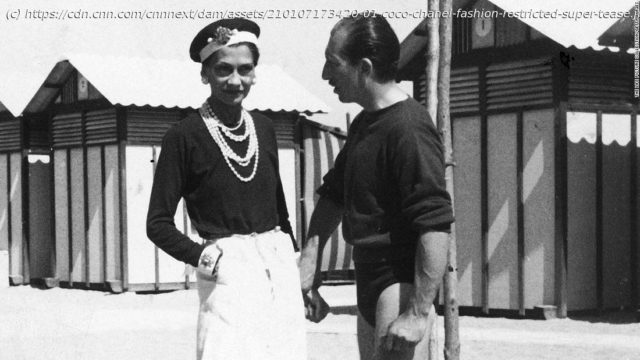Fifty years after her death, the trailblazing designer’s influence on fashion lives on. Here are 8 important style innovations from a designer who once famously said: „I don’t do fashion. I am fashion.“
Gabrielle „Coco“ Chanel was one of the 20th century’s most influential couturiers. A milliner by training, she moved beyond hats to become a rebel and a trailblazer of the fashion world, creating a new sartorial style that freed women from corsets and lace frills by offering them sailor shirts and wide-leg pants instead. „Nothing is more beautiful than freedom of the body,“ she once said, and her designs lived by these words: Chanel’s silhouettes were fluid and androgynous, her designs loose and — in the case of her iconic little black dress, or LBD — democratic. She wanted women to move and breathe in her clothes, just like men did in theirs. Her work was, in many ways, a form of female emancipation. Sunday marks 50 years since Chanel’s death, aged 87, though her legacy endures. As well as revolutionizing how we dress, she helped form a new ideal of what a fashion brand could be: an all-encompassing force that could tend to all aspects of a woman’s life, from formal attire to holiday wardrobes and evening ones. Chanel captured her vision in „Coco-isms“ that read like acerbic precursors of today’s ubiquitous inspirational quotes — „a woman who doesn’t wear perfume has no future,“ or „If you’re sad, add more lipstick and attack.“ Here are 8 important style innovations from a designer who once famously said: „I don’t do fashion. I am fashion.“ Chanel didn’t invent women’s pants — they had already entered wardrobes during World War I, when women started taking jobs traditionally carried out by men. But she undeniably popularized them as a fashion garment. The designer liked wearing pants herself (she often borrowed them from her male lovers), and, as early as 1918, began sporting flowy „beach pajamas“ while vacationing on the French Riviera. Drawing inspiration from the straight, wide cuts of sailor’s pants, giving them a loose, comfortable shape, she matched them with oversized shirts or sleeveless tops. The garment considered risqué at the time, due to pajamas‘ association with the bedroom, but by the mid-1920s it become a staple among wealthy ladies and a fixture of Chanel’s collections. French sailors and fishermen had been sporting Breton tops — striped sweaters made from tightly knit wool to protect them from the elements — since the 19th century. Chanel, however, turned them into fashion. Striped pieces appeared in her boutique in the society resort of Deauville, Normandy, in the 1910s. She reworked them in jersey, giving them patch pockets and accessorizing them with thick belts.






